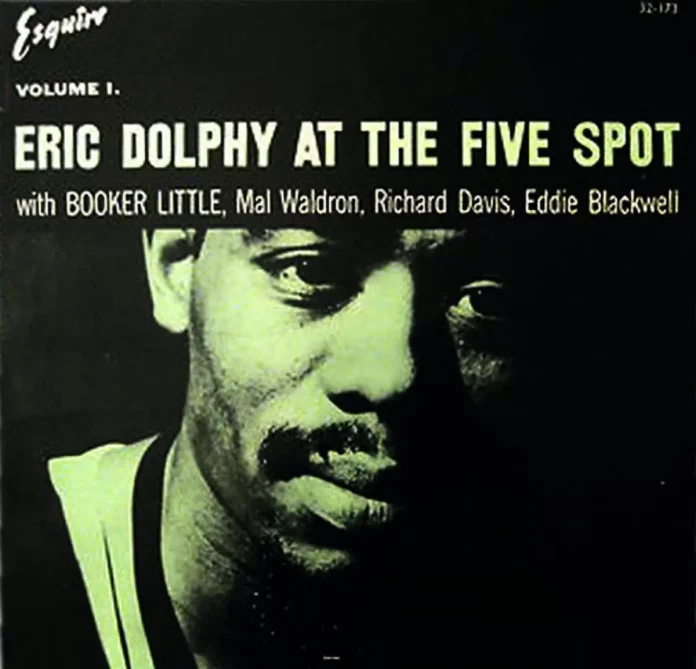Zoot Sims once remarked that Ornette Coleman sounded as if he was playing “slide alto”. This description could be applied to Eric Dolphy, judging by his performance on this, his latest release.
Dissonance, it would appear, is the main ingredient of Mr. Dolphy’s music. Melody, harmony and swing take a back seat as he plunges the listener into a twisted world of meaningless notes, spat out with all the venom of a cat’s hiss.
Dolphy’s shapeless ramblings will be dismissed by all but the ultra-hip – and they have already heralded him as the new Bird.
The late Booker Little joins Dolphy on this “live” recording taped at New York’s Five Spot Cafe. The trumpeter blows stimulating solos which recall Clifford Brown and Lee Morgan in places. Although Little was fascinated by dissonance he was a far more conventional and coherent musician than Dolphy.
Such avant garde experimenters as these seem strange company for Mai Waldron, the lyrical pianist who so tastefully accompanied Billie Holiday in her last years.
Side one opens with Waldron’s “Fire Waltz” – it is quite similar to the Django Reinhardt composition “Nuages” – and Dolphy quickly loses any semblance of logic in his alto solo.
On “Bee Vamp”, written by Little, Dolphy switches to bass clarinet for another aimless musical lurch. The whole of side two is given over to a Dolphy original, “The Prophet”, which at 22 minutes must be the longest piece of cacophony available.
Discography
Fire Waltz; Bee Vamp (26½ min) – The Prophet (22 min)
Eric Dolphy (alt & bs clt); Booker Little (tpt); Mal Waldron (p); Richard Davis (bs); Ed Blackwell (d). Five Spot Café, New York City. 16/7/61.
(Esquire 32-173 12inLP 35s. 1d.)
















